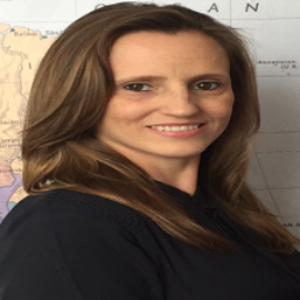Title : Trichloroisocyanuric acid mediated oxidative rearrangement of tetrahydro-b-carbolines
Abstract:
Spirooxindoles are exceptional and versatile scaffolds, and thus have been extensively studied in the fields of synthetic and pharmaceutical chemistry. The unique three-dimensional spiro system may be the main cause for the bioactivities of spirooxindoles. Especially, spirooxindoles have been considered to exhibit antitumor, antimicrobial, antioxidant, anti-inflammatory, antiviral and other bioactivities. Due to all these pharmaceutical potencies of spirooxindole derivatives, chemists have been inspired to establish various synthetic routes for this class of compounds. One of them is a multi-reactive centered reagent, which is beneficial in chemical synthesis due to their advantage of minimal material utilization and formation of less by-products.
In this work we employed the safer multi-reactive centered reagent (MRCR) trichloroisocyanuric acid (TCCA). TCCA is a reagent with three reactive centers, and was employed here in the synthesis of spirooxindoles from various N-protected tetrahydro-b-carbolines. Particularly, TCCA is inexpensive and produces essentially the nontoxic cyanuric acid as a by-product, which can be easily separated from the reaction mixture.
The reaction proceeded via oxidative rearrangement and produced spirooxindoles in good to excellent yields (up to 99%). The optimized protocol consisted in 0.35 equivalents of TCCA and THF/water (1:1) as the solvent at room temperature for 30 minutes. Diversely substituted spirooxindoles and naturally occurring (±)-coerulescine and (±)-horsfiline were furnished in excellent yields using the optimized reaction conditions. To demonstrate the commercial importance of this protocol, gram-scale reactions to produce (±)-coerulescine and (±)-horsfiline with yields of 93% and 90%, respectively, were carried out. In addition, this synthetic strategy is amenable for the generation of a library spiro-compounds and their derivatives, which can be further utilized in the drug discovery process.
Audience take-away:
- Multi-reactive centered reagents are beneficial in chemical synthesis due to their advantage of minimal material utilization and formation of less by-products. Trichloroisocyanuric acid (TCCA), a reagent with three reactive centers, was employed in the synthesis of spirooxindoles.
- Low equivalents of TCCA were required to give spirooxindoles up to 99% yield.
- This protocol was proven for the gram-scale total synthesis of natural alkaloids such as coerulescine and hors?line in excellent yields.
- An operationally simple and high yield protocol for the synthesis of spirooxindoles from the corresponding tetrahydro-b-carbolines (THBCs) using the inexpensive TCCA.
- To demonstrate the commercial importance of this protocol, it also carried out gram-scale reactions to produce bioactive compounds yields above 90%.
- This synthetic strategy is amenable for the generation of a library spiro-compounds and their derivatives, which can be further utilized in the drug discovery process.




